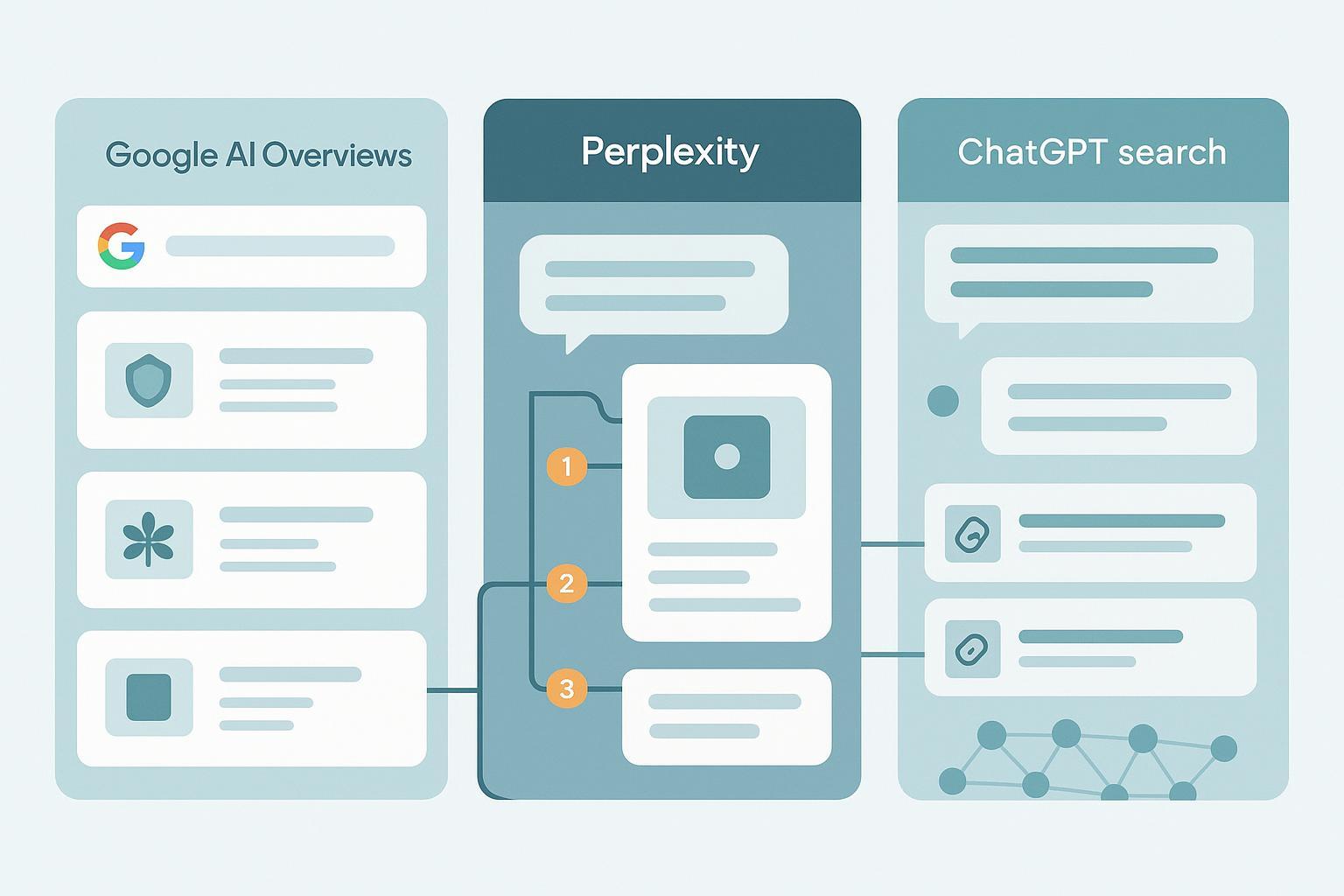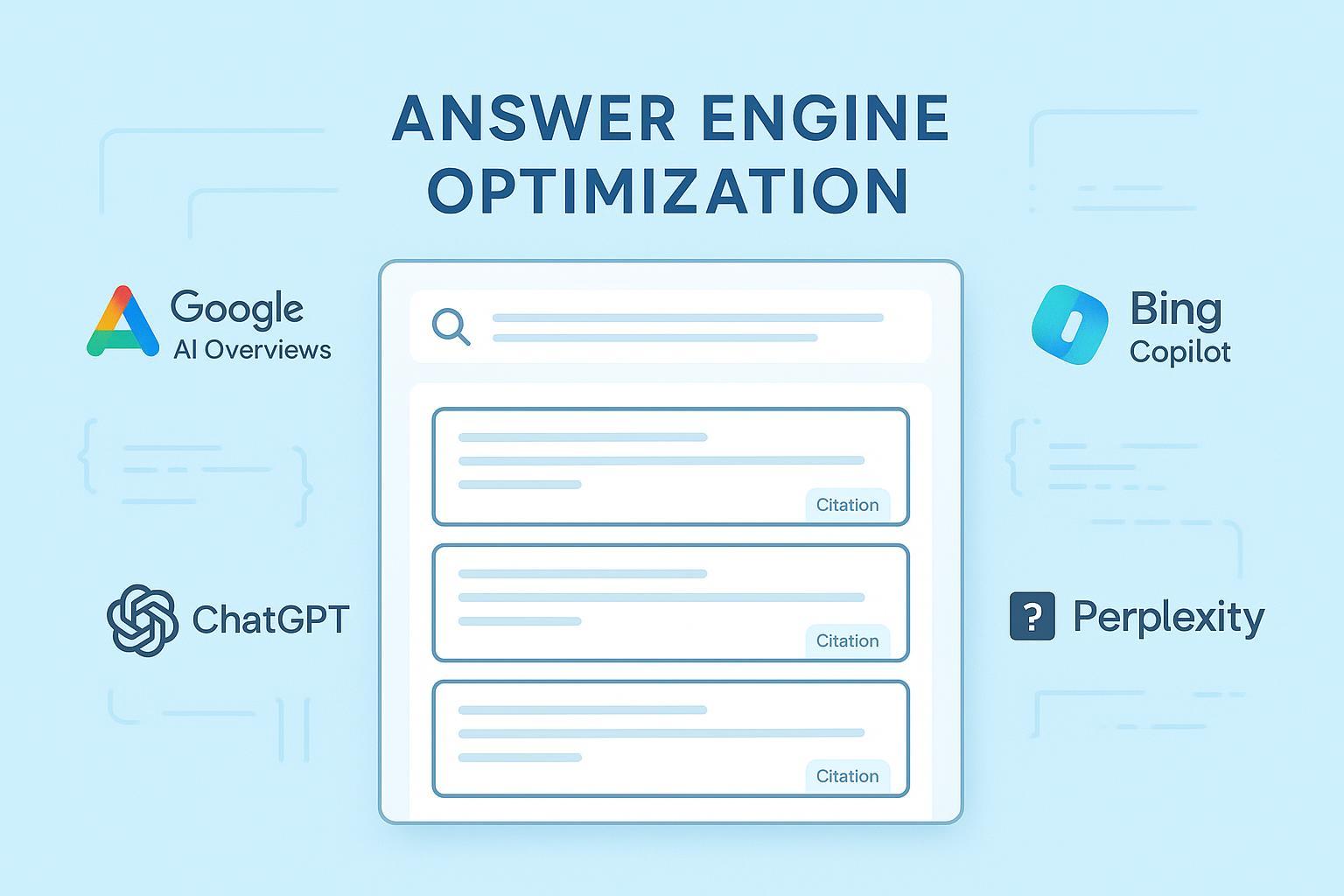What Is llms.txt and How Does It Impact AI Content Crawling
llms.txt is a markdown file at your site's root that guides large language models to your key content, improving AI crawling and content accuracy.


You might ask, what is llms.txt? This file sits at the main part of your website. It helps large language models know which pages have your best content. Robots.txt blocks or lets search engines in, but llms.txt is different. It helps ai systems like OpenAI and Anthropic learn your site’s layout. This makes content crawling better. Using llms.txt gives you more control over how llms use your site. People who tried it early saw up to 40% more mentions on ai platforms. They also saw better brand results. This happens because llms can get good information right from your site. Now, llms.txt lets you change how ai and large language models view your website. Only a few sites use these controls right now.
Key Takeaways
llms.txt is a new file. It helps AI systems find your website’s best content. It also helps them understand it easily. - robots.txt blocks pages from AI. But llms.txt gives AI clear summaries and important links. - Using llms.txt helps AI crawl your site better. This makes your content show up more in AI results. It also makes the results more correct. - If you keep llms.txt updated, you control what AI sees. This helps your brand stand out in AI searches. - Making and testing llms.txt is easy. It gets your website ready for more AI use.
What Is llms.txt
Purpose of llms.txt
You might wonder about llms.txt. This file is a new tool for websites. It helps large language models, called LLMs, learn about your site. You put the llms.txt file at the main part of your website, just like robots.txt. But llms.txt uses markdown, so both people and AI can read it easily. The main job of this file is to help AI systems like ChatGPT and Claude find your best content.
llms.txt is a new web standard. It helps large language models process, understand, and sum up website content. This file is in markdown and sits at the root of your site. It is like robots.txt, but it helps AI understand your content, not just control crawling.
You use llms.txt to show your most important pages, summaries, and links. This helps AI models find what matters most. The file skips things like ads, menus, or scripts. It gives a clear path to your main content. If you keep your llms.txt file updated, large language models always see your newest and best information.
Here are some main reasons to use llms.txt:
It helps AI models know what is important on your site.
It does not block anything, but shows key pages and context.
It helps AI models give credit to your content, which can help your site get noticed.
It makes sure AI systems understand and show your website the right way.
It gives a simple overview, so AI can process your site better.
It helps you keep your content organized and up to date.
The llms.txt file helps your website get ready for the future with AI. By giving a short, clear summary, you make sure large language models can find and share your best content. This can help people get better answers and make your brand stronger in AI results.
How llms.txt Differs from robots.txt
You may know about robots.txt, but how is llms.txt different? Both files go at the main part of your website, but they do different things. Robots.txt tells web crawlers, like Googlebot, what parts of your site they can visit. The llms.txt file is a guide for large language models. It does not block or allow crawling. It points AI to your most important content.
Here is a table to show the main differences:
Aspect | llms.txt | robots.txt |
|---|---|---|
Purpose | Gives a short, AI-friendly summary of your key website content to help LLMs understand and answer better. | Tells web crawlers what parts of a website they can or cannot visit. |
Target Audience | Large language models (LLMs) and AI systems that look at your site. | Web crawlers like Googlebot or Bingbot used by search engines or other bots. |
Format | Markdown text file with organized content like titles, summaries, and links. | Plain text file with rules like User-agent, Allow, Disallow. |
Content | Short info and links to important resources in a way AI can read. | Rules for crawler behavior, listing allowed or blocked URLs or paths. |
Primary Function | Helps AI understand by giving clear, useful content for fast processing. | Controls crawler access to stop indexing of private or unneeded pages. |
Impact on AI | Directly helps LLMs by giving a simple content list, so they make fewer mistakes with tricky HTML or JavaScript. | Indirectly affects AI by limiting what crawlers can see, but not made for AI understanding. |
Adoption Status | New standard, used by some sites but not many LLM providers yet. | Old standard, used by search engines since the 1990s. |
You can also look at llms.txt and sitemap.xml. Sitemap.xml lists all your pages for search engines. The llms.txt file gives a short list and summaries for AI. It uses markdown, with headings, summaries, and sorted links. This helps large language models read and use your site’s information.
Robots.txt is for access control. Sitemap.xml helps find pages. The llms.txt file helps AI models find and understand your best content. If you want your site to show up in AI answers, you should use llms.txt with your other files.
The llms.txt file is still new. It is made by the community, started by experts like Jeremy Howard and supported by groups like Mintlify and Anthropic. You can find the latest info and examples on llmstxt.org and GitHub. As more AI systems use llms.txt, your website will get even more benefits.
llms.txt File Structure

Key Elements
When you create an llms.txt file, you follow a clear structure. This helps both people and llms understand your site. The llms.txt file always starts with a top-level H1 heading. You use this heading to show the name of your project or website. Right after the heading, you add a blockquote. This blockquote gives a short summary of your site’s purpose and who it helps.
You can add more sections to your llms.txt file. Use H2 headers to organize these sections. For example, you might have sections for guides, API references, or tutorials. Each section can list important links. You write these links in markdown, like [Guide](https://example.com/guide): A quick start guide.
Here is what you usually include in an llms.txt file:
H1 heading with your site or project name (required)
Blockquote summary about your site (required)
H2 sections for main resources, like documentation or guides (optional)
Lists of links with short notes (optional)
An "Optional" section for less important links (optional)
Tip: The "Optional" section lets llms skip some links if they need a shorter summary. This helps llms focus on your key information.
The llms.txt file uses markdown so it is easy for both humans and llms to read. You should keep your llms.txt file updated with your best content.
Example llms.txt File
Below is a sample llms.txt file. This shows you how to organize your content for llms:
# ExampleSite
> ExampleSite is a platform for sharing coding tutorials and API documentation. It helps developers learn new skills and find answers fast.
## Core Documentation
- [Getting Started](https://examplesite.com/start): Learn how to use ExampleSite.
- [API Reference](https://examplesite.com/api): Full API documentation.
- [FAQ](https://examplesite.com/faq): Common questions and answers.
## Community
- [Forum](https://examplesite.com/forum): Join the discussion.
- [Changelog](https://examplesite.com/changelog): See recent updates.
## Optional
- [Legacy Docs](https://examplesite.com/legacy): Older documentation.
- [Beta Features](https://examplesite.com/beta): Try new features early.
You see that the llms.txt file starts with an H1 and a summary. It uses H2 headers for sections like "Core Documentation" and "Community." Each link has a short note. The "Optional" section lists extra resources that llms can skip if needed.
You may also hear about llms-full.txt. This file is related to llms.txt. While the llms.txt file gives a summary and navigation for llms, llms-full.txt holds all your documentation in one markdown file. This lets llms read everything in detail if they need more than just the key information. Using both files helps llms get a quick overview or a deep dive into your site.
How LLMs Utilize llms.txt
AI Crawling and Indexing
When you add llms.txt to your website, you help llms crawl and index your content more efficiently. Instead of making llms sort through messy HTML, ads, or menus, you give them a clear, structured guide. This file sits at your site’s root and acts like a map for ai systems. Here’s how llms utilize llms.txt to improve crawling and indexing:
llms.txt provides a simple markdown file that is easy for llms to read and understand.
You can list your most important pages, summaries, and even full text, so llms know what to focus on.
llms utilize llms.txt to skip over unneeded parts of your site, which saves time and resources.
By following your llms.txt, ai systems can crawl your site faster and find the right information for search and information retrieval.
This process helps ai systems avoid mistakes and makes your content more visible in ai-powered search results.
llms.txt acts as a shortcut for llms, letting them find your best content without wasting time on things that do not matter.
Improving Content Understanding
llms.txt does more than just guide crawling. It helps llms understand your content better. When you organize your site with llms.txt, you give ai systems a clean summary of what your site offers. This reduces confusion and helps llms give more accurate answers.
Early adopters like Anthropic, Cloudflare, and Mintlify have seen real benefits. Their content appears more often in ai responses, and their brand gets more attention. llms.txt works like a treasure map, pointing llms to the most valuable information. This means ai systems can deliver better, more relevant answers to users.
You also help llms avoid errors, like mixing up old or unimportant pages. With llms.txt, you control what ai systems see and use. This gives your site a competitive edge in ai-driven search and content generation. As more platforms support llms.txt, you will see even greater improvements in how llms understand and share your content.
Benefits of llms.txt for Websites

AI Visibility and Control
Adding llms.txt to your website gives you more power over how ai systems use your content. This file works like a map for llms. It shows them which pages are most important. You can point out your best resources and write clear summaries. You can also keep private or sensitive information safe. With llms.txt, you choose what ai can see and share. This helps keep your brand and data safe.
Many website owners see that llms.txt makes their content easier for ai to find and understand. You help llms skip ads, menus, or old pages. This way, they focus on what matters most. It makes things faster and saves work for your server and the ai. As more companies use llms.txt, you get a head start in the growing ai world.
Using llms.txt gets your website ready for a future with more ai. Your content will work well with new tools and platforms that use llms.
Here is a quick look at what llms.txt support offers:
Better visibility as ai search and chatbots grow.
More control over what parts of your site ai uses.
Easier access for llms and helpful technologies.
SEO and Content Representation
llms.txt also helps your website’s SEO and how your content shows up in ai search results. When you organize your llms.txt file with clear sections and summaries, you help llms find your best pages. This lets ai systems show your site in a good way, with the right and newest information.
Websites that use llms.txt often get better rankings and more visitors. Some sites see a 25% jump in visits and a 20% rise in backlinks from llms recommendations. You can watch these changes with tools like Google Analytics. By keeping your llms.txt file updated, you help llms give better and more complete answers. This can bring more people to your site and keep them interested.
llms.txt does not replace regular SEO, but it gives you more control. You can make sure ai systems show off your skills, products, or services. This makes your brand look better and helps you stand out in ai search results.
Tip: Update your llms.txt file often to keep your content fresh and stay ahead as llms and ai systems change.
Implementing llms.txt
Creation Steps
You can make a good llms.txt file by following easy steps. First, create a plain text file called llms.txt. Save it in the main folder of your website. Use Markdown to organize your file. Start with a title using an H1 heading. Add a short summary in a blockquote right after. Next, use H2 headers to split your content into groups like Products, Guides, or Policies. Under each group, list important URLs with short and clear notes. This helps llms find and understand your main pages.
Here is a table to help you with each step:
Step Category | Actions & Details |
|---|---|
File Creation | Make llms.txt at your website’s root; use Markdown for structure. |
File Structure | Begin with a Title (H1); add a clear Summary (blockquote). |
Section Headers | Use H2 headers for types like Products or Guides. |
Content Listing | List URLs with short notes under each group. |
Access Control | Add any rules or usage notes if needed. |
Attribution | Say how you want your content credited. |
Privacy Considerations | Add privacy or compliance notes if your site has sensitive data. |
Testing & Validation | Check your file’s format and test with common llms providers. |
Updating & Versioning | Review and update the file often; keep a changelog if you can. |
Deployment | Put the file at https://yourdomain.com/llms.txt for easy access. |
Tip: Use simple words and keep your file short. Focus on your main pages, not every page.
Best Practices
To get the best results from llms.txt, follow some smart tips. Organize your content by how users use your site, not just by features. This helps llms see how people use your website. Add code samples or screenshots if you can to make things clearer. Update your llms.txt file when you launch new products or change your site. For websites that change a lot, check the file every few months. A changelog helps you track changes and keeps things neat.
Pick a plan that fits your business, like a catalog, specialist, or ecosystem style.
List all tools and platforms linked to your site to help llms suggest your site better.
Add community links like user groups or events to build engagement.
Use tracking tools, like special codes or UTM tags, to see how llms.txt helps.
Change your plan as your business grows or as you face new ai problems.
Testing and Monitoring
After you add llms.txt, you need to test and watch how it works. Use online tools like llmstxtgenerator.org or Mintlify to check your file’s format and location. Watch how llms visit your site by checking access logs and looking for patterns in how your content is used. Some sites, like TrueFoundry or LangWatch, have dashboards to help you see how llms use your content. Set up alerts for any strange access or mistakes. Check your file often to make sure it is current and still works for you.
Watching your file all the time helps you find problems early and keeps your site ready for new AI rules.
You now see how llms.txt shapes the future of AI and website visibility. By adding this file, you help AI systems like ChatGPT and Bing AI find and understand your best content. Many top companies, including Microsoft and Anthropic, already use llms.txt and llms-full.txt.
Regular updates and clear structure keep your site ready for new AI trends.
Monitoring how AI bots use your file helps you improve your strategy.
Stay alert as more businesses adopt llms.txt and new standards emerge. This simple step can boost your site’s reach in the world of AI-driven search.
FAQ
What is the main purpose of llms.txt?
You use llms.txt to help AI systems find and understand your best website content. This file gives large language models a clear guide to your most important pages and summaries.
Where should I place the llms.txt file on my website?
Place the llms.txt file in your website’s root directory. For example, you should see it at
https://yourdomain.com/llms.txt. This makes it easy for AI systems to find and read.
Does llms.txt replace robots.txt or sitemap.xml?
No, llms.txt does not replace robots.txt or sitemap.xml. You use llms.txt to guide AI, robots.txt to control crawlers, and sitemap.xml to list all your pages for search engines.
How often should I update my llms.txt file?
You should update your llms.txt file whenever you add new important content or make big changes to your site. Regular updates help AI systems show your latest and best information.
See Also
Understanding Content Strategy: Elements And AI Search Uses
Content Gap Analysis Explained: Steps And AI SEO Benefits
Top AI Technology Solutions For Answer Engine Optimization




